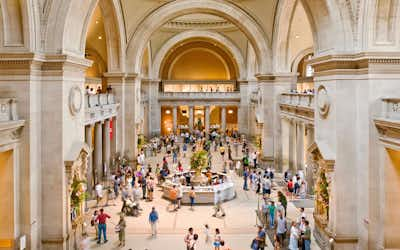Is it really a trip to a new destination if you don't spend a couple of hours hopping on and off the city's public transport? There's something distinctly charming about discovering a city you haven't been to before via its public transport. Walking around the city to locate a subway station or bus stand, asking locals for help, and even indulging in some frantic, last-minute research to identify the best route, the entire experience adds to the appeal of traveling in public transport.
You can pretty much get anywhere in the city via public transport and save a lot of time and money in the process. Although, if we're being honest, New York City's public transport is pretty complex. Here's all you need to ace New York's Public transport network - the different modes, hacks on when to use what and a lot more to travel around NYC like a true New - Yorker!
New York Public Transportation - The Basics
New York City constitutes five administrative divisions, commonly referred to as boroughs - Bronx, Brooklyn, Manhattan, Queens and Staten Island. While these boroughs are separated by land and water, NYC's well-developed transport system ensures that you reach any corner of the city without much trouble. There are countless ways to travel in the city, from bus and subway to commuter rail and even ferry. The city 27 subway lines (that go to 472 stations) and 5,725 buses, both combined giving you access to every nook around the five boroughs. Given that New York is the most populous city in the world, you would be wondering if the city's transport system is equipped to deal with all that crowd on a regular basis. Well, the short answer is yes.
Getting To New York City From The Airport
There are three airports in New York City - John F Kennedy International Airport, LaGuardia Airport, and Newark Liberty International Airport. Here's how you can reach Manhattan from each of these airports:
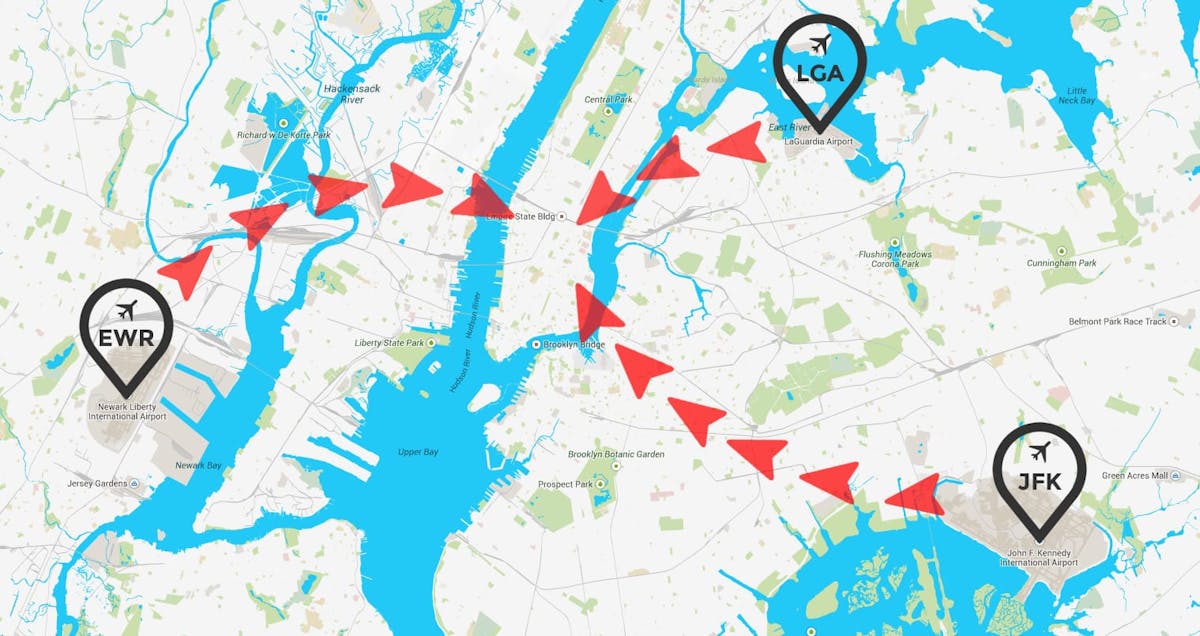
John F Kennedy International Airport
Located around 16 miles away from Manhattan, JFK International Airport is the biggest in the city.
- The fastest way to get to Manhattan from the airport would be by hailing a taxi from any of the taxi stands outside each terminal. While hiring a taxi cab is the quickest way to get to the city, it's also the most expensive.
- If you're looking for the cheapest way to Manhattan, a combination of AirTrain and subway would be the perfect choice. However, this is time consuming and if you're short on time, we would suggest taking a cab.
- Another option would be taking a bus all the way to Brooklyn and taking the subway to Manhattan from here. This again could be time consuming, but you won't regret having spent a bomb the minute landed in NYC!
LaGuardia Airport
Just 8 miles from Manhattan, LaGuardia Airport is the closest airport to midtown Manhattan. While there are very few international flights that land here, it's still a relatively busy airport.
- The best way to reach Manhattan from LaGuardia Airport is by taking the airport buses to the closest subway station. There are two buses, Q70 and M60, both of which begin from the airport and will drop you at the Jackson Heights Roosevelt Ave subway station and Harlem in Upper Manhattan, respectively.
Newark Liberty International Airport
Located around 17 miles away, Newark Liberty Airport lies farthest from Manhattan.
- If you're visiting NYC for the first time, opting for a taxi cab is the easiest option. You'll have to shell out anywhere between $50 to $75 depending on your destination in Manhattan.
- If you're looking for a cheaper alternative, there's the NYC Airport Shuttle service and the express bus service available at the airport.
- If you're short on time, opt for a combination of AirTrain and New Jersey transit train to reach your destination fastest.
Pro tip : If you're planning to take the bus from any of the airports, make sure you have quarters (coins) handy as the buses do not accept dollar bills.
NYC Public Transportation Deconstructed
1Subway
With 472 stations, the New York Subway is by far the biggest subway network in the world and can best be described as the backbone of NYC's public transport system. There are 27 train services in the network including three short shuttles: The 1, C, G, L, M, R, and W trains are fully local and make all stops while the 2, 3, 4, 5, A, B, D, E, F, N, and Q trains are partly made of express and local services. J, Z, 6, and 7 trains vary by day or time of day. The letter S is used for three shuttle services: Franklin Avenue Shuttle, Rockaway Park Shuttle, and 42nd Street Shuttle.
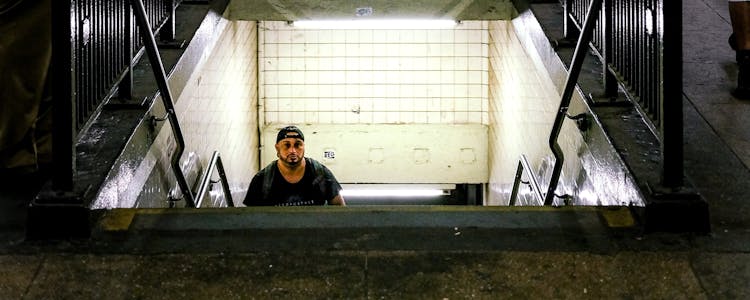
2Buses
Under the MTA Regional Bus Operations, there are over 5710 buses currently plying in the city. These buses run 24/7 on around 238 local routes, 62 express routes, and 7 Select Bus service routes. MTA operates around 80% of the total buses and there are clean-air diesel hybrid bus fleet and compressed natural gas bus fleet in the city as well. To further assist travelers with seamless transport, MTA provides exact bus arrival time using QR codes located at each stop. Arrival times are also indicated in certain bus through digital panels.
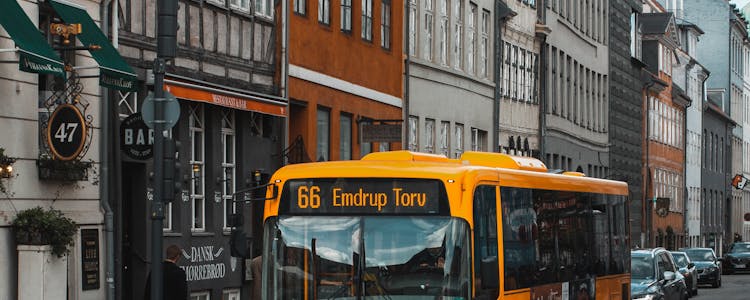
Related: Speaking of New York buses, fancy yourself some NYC sightseeing Hop-On Hop-Off tickets? Check these tickets out:
3Commuter Rail
Featuring over 259 stations and 20 rail lines, NYC's commuter rail network is the biggest in the United States and serves upwards of 150 million patrons annually. There are two primary operators for commuter rain in the suburbs, the MTA and the New Jersey Transit can also hail one on the road, though it does get difficult during rush hour.
There are additional connections available to neighboring commuter rail systems including the Southeast Pennsylvania's SEPTA in Trenton, New Jersey and Southeast Connecticut's Shore Line East in New Haven. To improve connectivity with northeast Pennsylvania, service is being considered as far as Scranton in Pennsylvania. Like everywhere else in the world, you can get individual journey tickets for any station in the commuter rail network at any train station. An e-ticketing app, eTix is also available for users to wish to buy tickets on their phone.
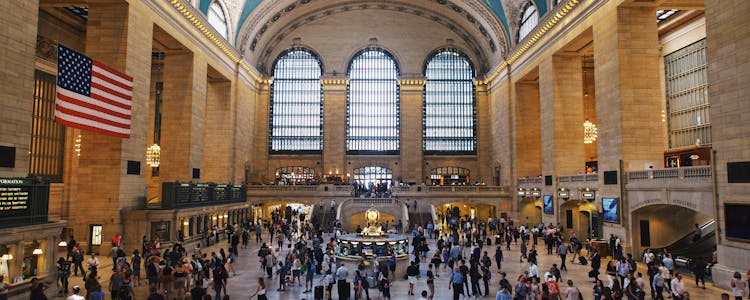
4Ferry
New York is surrounded by a lot of water and there are channels of water that run through the city, allowing for waterways to be considered a serious mode of transportation in the city. Some of the popular ways that boats are used as public transport are the NYC Ferry and Staten Island Ferry. A new addition to the city's public transport system, the NYC Ferry was launched in 2017 and offers four lines, with two more lines in the pipeline. The NYC Ferry has 21 terminals and 23 boats in operation which connect Manhattan with Brooklyn and Queens.
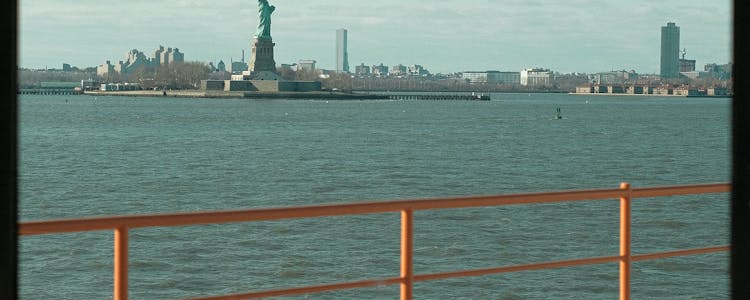
Related: Speaking of New York ferries, fancy yourself some NYC sightseeing tickets via waterways? Check these tickets out:
5Trams
At this point, it's pretty evident that there's no dearth of feasible transport options in New York. Next up on our list is something a little unique. We're referring to the Roosevelt Island Tramway. This aerial tram connects Roosevelt Island with the Upper East Side of Manhattan.
Although the Roosevelt Island Tramway is not operated by the MTA, you'll still need a MetroCard to access the tram. A single person can board the tram at the cost of $2.75, which is the same cost as a subway or bus ride. If you're annoyed at the prospect of having to get a MetroCard for the aerial tram ride, know that you can transfer from the tram to a subway or bus service without paying any additional. This is because the tram is linked to the MetroCard system.
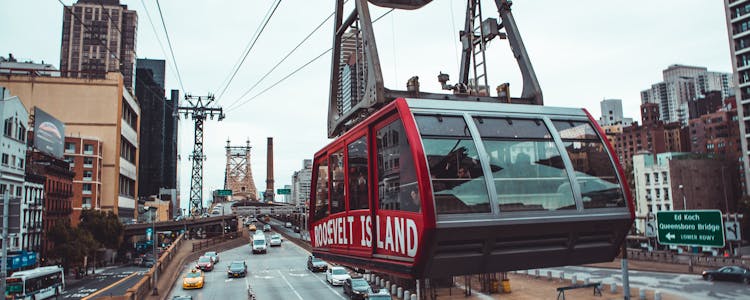
6Taxi
NYC has a massive fleet of taxis, with the number touching the 13000 mark! These cabs make an estimated 175 million trips annually, a clear indication of just how popular this mode of transport is. The base fare for the taxi cab is $2.50 and it increases by $0.40 every 1/5th of a mile. When you're looking to hail a taxi cab, stand at the edge of the curb stick your hand out in the air and try and make eye contact with the driver. If you want a smoother process, just shoot a loud whistle to grab the nearest cab driver's attention. It goes without saying that taking a taxi cab in New York is more about the experience than anything else but if you're traveling a short distance, a cab works out to be the better option.
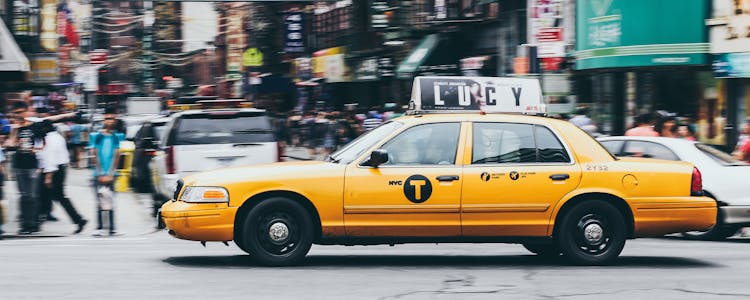
Yellow taxi cabs VS Uber/Lyft?
The more convenient choice for most people is still the classic yellow cabs. In fact, it has been speculated that cabs are often 20-50% cheaper than Ubers and Lyfts, especially when traveling from the airports to the city.
7Pedicab
A pedicab, also known as a rickshaw, is a manually driver, open carriage-type vehicle that will take you on a fun journey in and around a specific area of New York. Usually seen around popular tourist areas like Central Park and Times Square, a pedicab is perfect when you have a lot of time in hand and want to go on a leisurely trip across the city. Only recommended for short distance sightseeing tours, a pedicab is a great, unique way to explore the city.
There are a lot of pedicab tours available in all the popular attractions in the city and each tour ranges from 1 to 4 hours. A single pedicab can fit 2-3 people and given the leisurely speed, allows for plenty of photo opportunities!
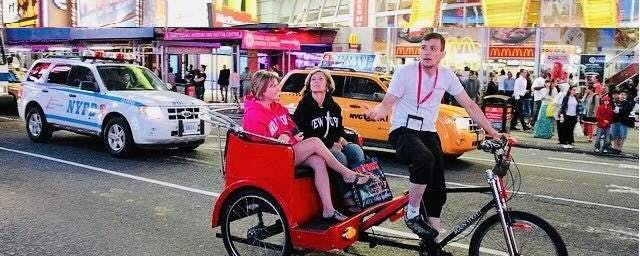
8Citi Bike
Cycle your way through New York City- an environment-friendly and iconic way to sightsee this marvellous city. Citi Bike is NYC's largest bike share program with over 1,500 bike stations scattered across Manhattan, Brooklyn, Queens, the Bronx, Jersey City and Hoboken. This is also a very cost-effective mode of transportation. Did you know that a whole year of using Citi Bike would cost you less than 2 monthly subway passes?
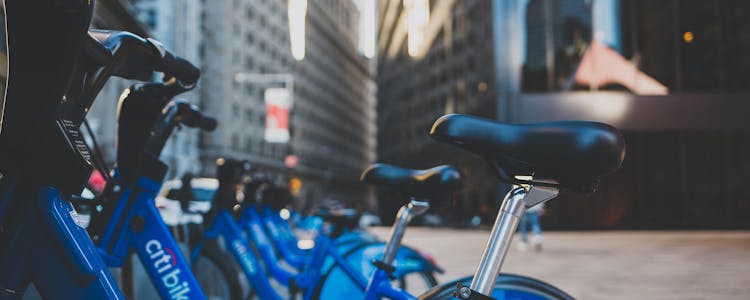
Best Ways To Get Around New York City
If you're wondering what's the best way to get around NYC, well there's no clear answer to that question. To take a bite of the Big Apple, people come with their own expectations, hopes and how you travel within the city is reflective of that.
- If you're looking to familiarize yourself with New York City and discover it like a true local, you should opt for buses and subway over cabs.
- If you're looking to hit up all the prime touristy attractions, a Hop On Hop Off pass can come handy.
- If you have a lot of time in hand and don't mind the physical activity, you can walk around the city or hop on a Citibike as well.
As you can see, there's something for every type of traveler in the city, you just need to find what works best for you!
The Best NYC Transport Passes
Given just how expansive (and expensive) both the city of New York and its transport options are, you'll end up spending a considerable amount of money on just moving around the city. To avoid that, here are two handy transport passes to you can use:
New York Explorer Pass
The NYC Explorer Pass is truly created keeping the convenience of tourists in mind. Pick from 3, 4, 5, 7 and 10 attractions from an exhaustive list of 82 landmarks in the city and get upto 50% off on entrance tickets. On top of getting free access to your selected attractions, you also get a ton of shopping, entertainment and dining discounts as well.
The NYC Explorer Pass is valid for 30 days, giving you plenty of time to get acquainted with the city at your own pace. To make the entire process even more convenient for you, the pass comes with an online guide and a printable PDF which includes useful information about the attractions as well as maps of the city.
New York Unlimited Attraction Pass
If you don't want to be limited in your quest to explore everything NYC has to offer, the New Year Unlimited Attractions Pass is perfect for you. Get free, one-time access to upwards of 100 attractions in NYC including the American Museum of Natural History, the Empire State Building and many, many more.
The pass can be used up to visit the attractions for either a day or 2,3,5, and 7. The Unlimited Attractions pass also comes with a downloadable guide that contains useful information like subway map, city map, contact information, travel tips and even attractions information.
Top 5 New York Public Transportation Apps
When we say that NYC's public transport system is a complex maze that will take some getting used to, we're not kidding. To help you navigate the city and its transport like a pro, here are some handy apps you must download before you arrive. Here are some apps you should consider downloading on your phone, in case things get messy!
- Exit Strategy: It takes a couple of tries to fully understand what exactly goes on in the NYC subway system. Exit strategy functions on a singular goal; keeping impatient New Yorkers moving through the subway with tips on where to stand on the platform and which train to board.
- Waze: If you're planning on renting a car and driving around the city, Waze is the app for you. The app crowdsources live data about the city's traffic conditions, including heavy traffic, accidents, and police activity and helps you champion NYC slightly crazy traffic.
- City Mapper: An app that literally tells you all the ways you can get to a destination, complete with station and mode changes is the perfect way for tourists to explore the city without asking around too much for help. The great thing about this app is that it also lists non-MTA transport options as well.
- Transit App: Oftentimes, the wait between two modes of transport can get really frustrating. For instance, you have just stepped out of the subway and are waiting for a bus but it's nowhere to be found! Enter your new best friend, the Transit App. The app will update you of all the transit options close to you and their time of arrival.
- Mapway Subway Map: Get an updated version of the New York City subway network map on your phone with the Mapway app. The days of carrying a giant physical map and struggling to make sense of it are long gone! What makes this particular subway map app better than the others is that it also works offline.
Tips & Hacks For Getting Around NYC
- If mastered, the subway can be your new best friend in the city. The underground train network is officially the world's largest and connects to literally every part of NYC.
- If you have some time to kill or are generally interested in walking, you can opt for a walking tour of the city.
- Opt for a combo travel pass to save on transport costs. These combo passes are generally accepted at all modes of transport and give you the freedom of choosing the mode of transportation of your choice without worrying about buying tickets separately for it.
- Another fun way to get around the city is the ferry service which takes commuters and visitors to Manhattan, Brooklyn, Queens, & Bronx.
- The plague of peak hour traffic strikes NYC's public transport system as well. On weekdays, 8:00 am to 9:30 am and 4:30 pm to 6:30 pm witnesses incredibly crowded streets and jam packed buses and trains.
- If you're looking to witness New York City in all its glory, there are certain subway trains that offer glorious views of Manhattan. Take the J, M or Z line over the Williamsburg Bridge or the B, D, N or Q line over the Manhattan Bridge for great views of Manhattan.
- If a subway car is empty, understand that it is empty for a reason. Always get into subway car that has atleast 5 to 10 people in it. It's much safer too.
More New York Guides
Fancy heading out to some other must-visit New York attractions? Take inspiration from our list of the best things to do in New York here. Use our comprehensive New York Travel Guide to explore the rest of New York in a hassle-free fashion with all the need-to-know information in hand.
Visiting New York for the first time? Get all the insider info and score tickets at unbelievable prices with Headout. Check out these guides to learn more.
FAQs: New York Public Transportation
39% of New Yorkers travel by subway, and most of them consider this to be the safest mode of transportation. Tip: Try avoiding traveling very late at night.
Yes, it is absolutely safe to take cabs in New York.
Local taxi cabs are said to be 20-50% cheaper than Ubers and Lyfts- especially when traveling from the airport to the city.
Before going to NYC, download waze (driving), exit strategy (metro), transit app (bus), etc.













